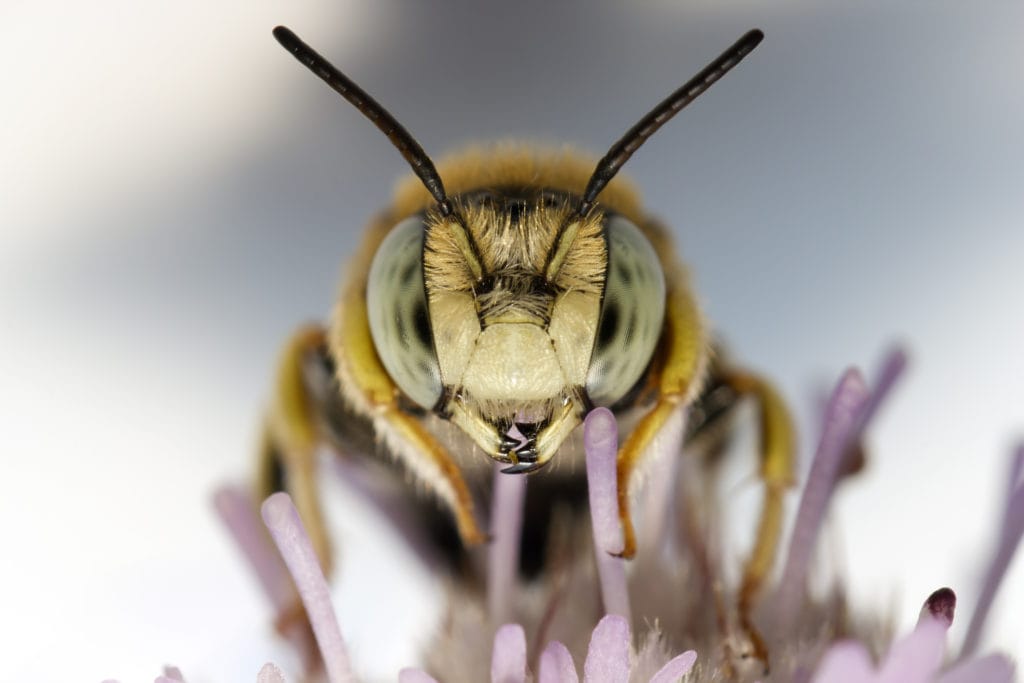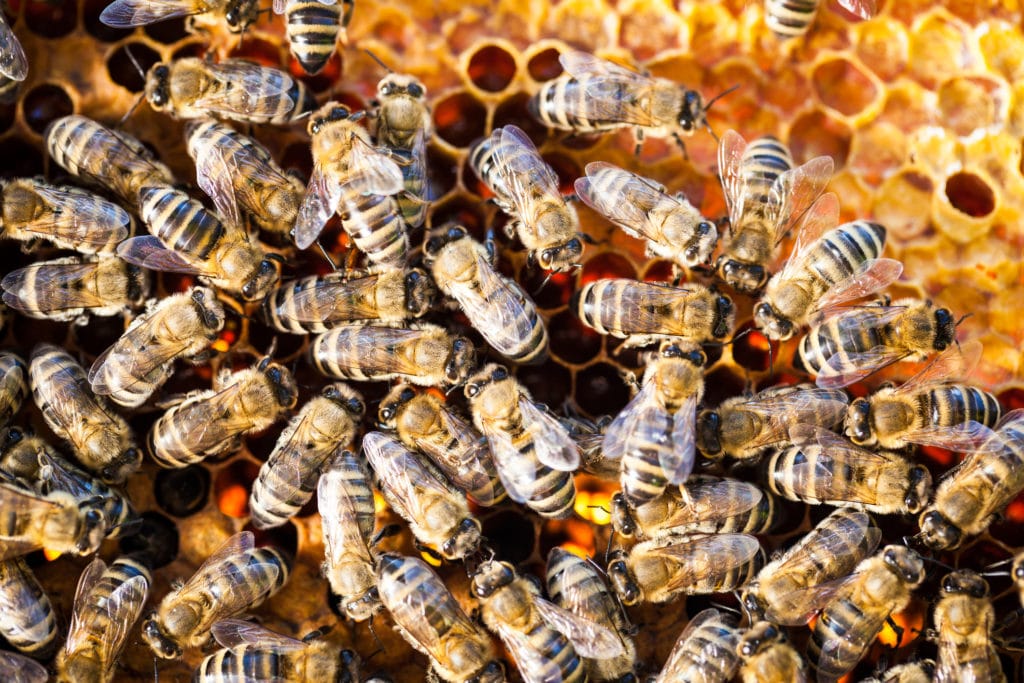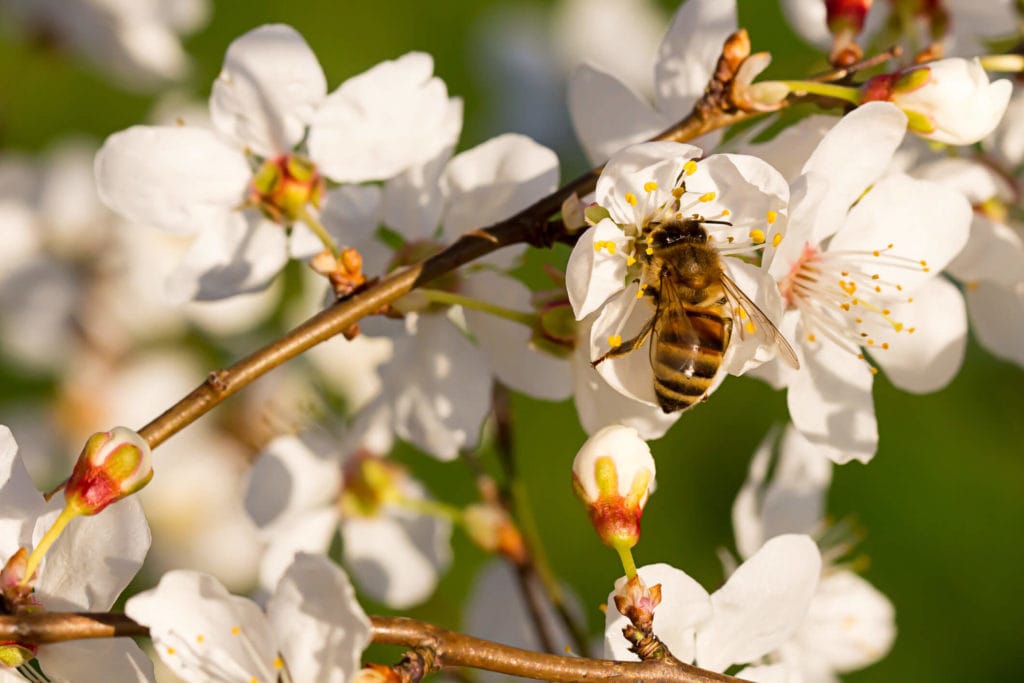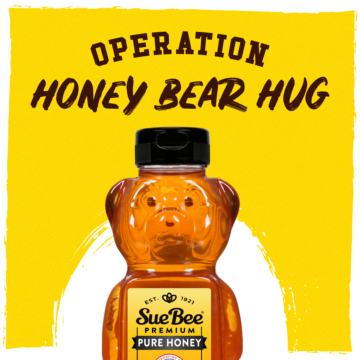Winged Workaholics
Hardworking honeybees set the standard when it comes to overachievement
You’ve heard the catchphrase: “busy as a bee.” We use it every day. In the movie Office Space, it might be used like this …
“How’s work, Peter?”
“Oh, lots of TPS reports to get done. I’m busy as a bee.”
But is he? Is Peter really working as hard as a honeybee? Or is “busy as a bee” just a silly saying that has become a cliché?
For Peter, maybe. But not for honeybees. For these hardworking insects, the catchphrase is truer today than it ever has been. Honeybees are indeed the hardest working creatures on earth. Need proof? Consider what a worker bee does over the course of a year.

Born to work
Honeybees begin to work from the day they are born. (Child labor laws don’t exist in a beehive.)
- Birth to 3 Days: Worker honeybees spend the first three days cleaning the cells they were born in, so that the cell can either be used for a new egg from the queen or for food storage.
- 3 to 7 Days: These days are spent helping feed older larvae.
- 7 to 14 Days: Worker bees secrete royal jelly that is fed to the queen, younger worker larvae and queen larvae. They also secrete wax for comb-building during this period.
- 14 to 21 Days: They begin to forage, primarily for pollen. They’ll fly up to 2 or 3 miles from the hive at about 15–20 mph, and with their wings beating about 230 times per second.

From 21 days on, worker bees forage for nectar, as well as contribute to the process of changing nectar into honey and helping fan the hive to keep it cool in the warmer months. Worker bees also gather water and propolis and defend the colony against intruders.
During the active honey season – spring and summer – worker bees live five or six weeks. (Overwintering worker bees may, however, live for four to six months.) During daylight, they work non-stop, and they might fly up to 500 miles in their lifetime.
All that for a pound of honey?
It is estimated that honeybees fly 50,000 to 75,000 miles and visit 2 to 4 million blossoms to gather enough nectar to produce one pound of honey.
A honeybee colony (a hive, which is made up of between 30,000 to 60,000 bees) can collect enough nectar to create and store between 3 and 5 pounds of honey a day during spring-summer. For an entire year, the bees need about 300 pounds for themselves. Plus, a beekeeper will harvest between 60 and 100+ pounds per hive for us humans to enjoy.

Wintertime work
So, what do the honeybees living in climates that experience cold winters do during the winter months?
If they are being kept by commercial beekeepers, like those of the Sioux Honey Association Co-op, honeybees are often shipped to cold storage facilities or to warmer climates (Texas, Florida, etc.) after beekeepers finish with the August harvest of honey.
In cold storage (potato sheds are ideal, for example), bees stay dormant, which helps them build strength and body fat. Plus, the bees are broodless, which means the queen can get a rest because she isn’t constantly laying eggs. The cool temps also help kill off hive pests like varroa mites, which can’t live if they don’t have new brood to eat.
In warmer climates, honeybees can also rest and build up strength. They also tend to hunker down for a few months, as winter temperatures are cooler even in southern locales in the U.S.
If you’re a honeybee that belongs to a commercial beekeeper in the U.S., your downtime lasts from September to December, and then it’s time to travel to California for the almond pollination season, which lasts from late-January to mid-March.
It’s no fun-in-the-sun vacation for the honeybees when they get to sunny, central California, either. They are busy collecting honey and pollinating almond trees. And then queens – which typically live between 2 and 5 years – who were taking a break are back to laying 1,500 to 3,000 eggs per day, rebuilding the hive with new worker bees.

More than almonds …
While beekeepers who lease their bees for pollination services typically do so for almond pollination, almonds are certainly not the only food bees pollinate. In fact, we rely on bees to pollinate 71 of the 100 crops that provide 90% of the world’s food. In the U.S. alone, honeybees pollinate an estimated $15 billion worth of crops every year. They say that one in every three bites of food we eat depends on bee pollination.
Here are just a few foods that would likely disappear without the honeybee: almonds, apples, avocados, blueberries, cherries, cucumbers, grapefruit, onions, oranges, pumpkins and lots, lots more!
Let’s not forget about those drone bees
We’ve talked about the worker bees (females) and the queen (also female), but we haven’t mentioned the drones of the beehive (the males).
That’s because their role is limited. Out of the 30,000–60,000 bees in a colony (a hive), only a few hundred are drones. Let’s face it, drones are only there for one thing: to mate with the queen. Drones do not pollinate, create wax or have a stinger. They just help make baby bees.
After six days in the hive, the drones venture out and get to know the area around the hive, and then they begin searching for a mate. Once a drone mates with the queen, he dies. Sorry, guys.
A labor of love
What does all this mean? It means we are even more grateful than ever for the wonderful, miraculous honeybee. And the next time someone says they are “busy as a bee,” you can say, “Well, actually …”


